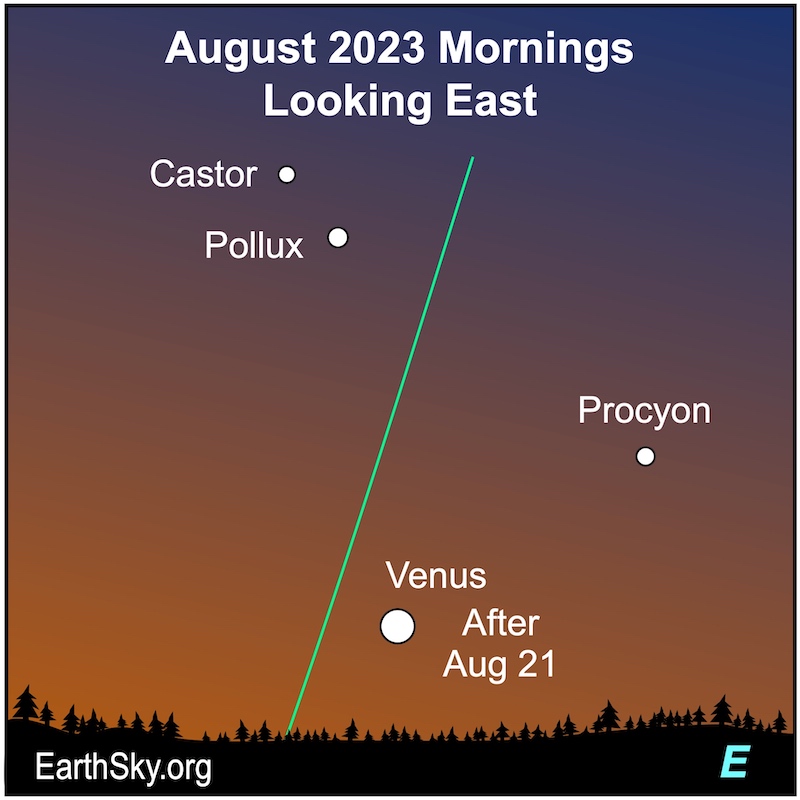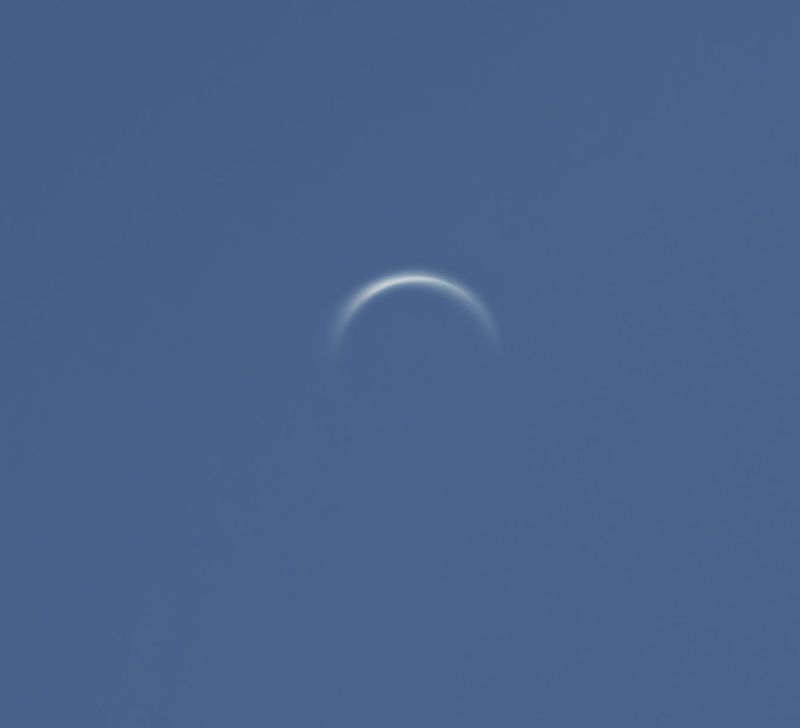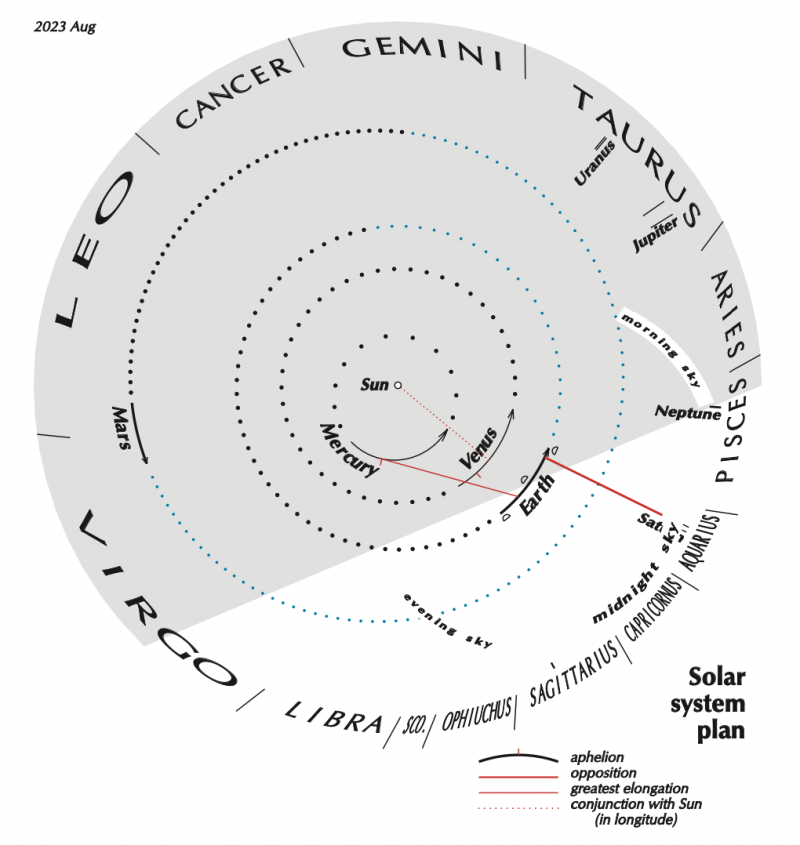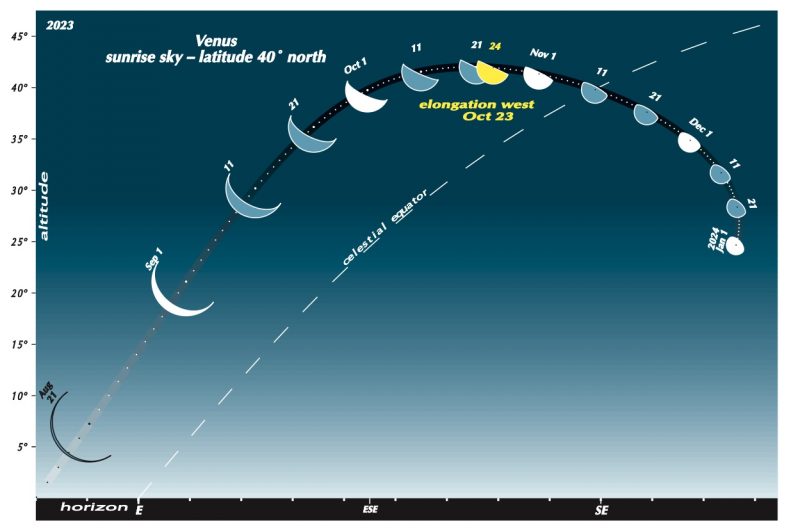Venus as ‘morning star’
For most of 2023, we saw Venus – the brightest planet – in the west after sunset. Many called it the evening star.
And, of course, Venus isn’t a star. It’s the next planet inward from Earth. Venus goes between us and the sun about every 19 months.
It did that last on August 13, 2023. Now, Venus is about to come back to our sky … this time in the east before dawn. People will call it the morning star.

It passed between us and sun August 13
The image below is from August 13, 2023 – just a few days ago – when Venus went between us and the sun. That day, it appeared about 7.7 degrees south of the sun in our sky.

Where is Venus now?
Now, Venus is racing ahead of Earth in its smaller orbit around the sun. So it’s about return to being visible in our sky again. It’ll be back before August comes to an end.
But now, we’ll see it on the other side of the sun in our sky – east before sunrise – as the beautiful “morning star.”
So Venus might surprise you some late August or early September morning.
You’ll look up and notice it – very bright, very low in the east – near the sunrise point. Indeed, it’ll be surprisingly bright for being so low in the sky.
Brightest mid-September 2023
It’ll go on to be brightest around mid-September … the “morning star.” Really, though, the planet Venus. An oddly bright beacon in the east in early morning for the rest of 2023.
Watch for it.

Venus after sunrise in 2023 the Northern Hemisphere
The chart below – via Guy Ottewell’s 2023 Astronomical Calendar – shows the phases of Venus for the rest of 2023.

Bottom line: Venus went between us and the sun on August 13, 2023. Before that, throughout 2023, it had been in the evening sky. People called it the evening star. After about August 21, it’ll return to the east before dawn. Then people will call it the morning star.
The post Venus to return as ‘morning star’ late August 2023 first appeared on EarthSky.
from EarthSky https://ift.tt/CpnKfSU
Venus as ‘morning star’
For most of 2023, we saw Venus – the brightest planet – in the west after sunset. Many called it the evening star.
And, of course, Venus isn’t a star. It’s the next planet inward from Earth. Venus goes between us and the sun about every 19 months.
It did that last on August 13, 2023. Now, Venus is about to come back to our sky … this time in the east before dawn. People will call it the morning star.

It passed between us and sun August 13
The image below is from August 13, 2023 – just a few days ago – when Venus went between us and the sun. That day, it appeared about 7.7 degrees south of the sun in our sky.

Where is Venus now?
Now, Venus is racing ahead of Earth in its smaller orbit around the sun. So it’s about return to being visible in our sky again. It’ll be back before August comes to an end.
But now, we’ll see it on the other side of the sun in our sky – east before sunrise – as the beautiful “morning star.”
So Venus might surprise you some late August or early September morning.
You’ll look up and notice it – very bright, very low in the east – near the sunrise point. Indeed, it’ll be surprisingly bright for being so low in the sky.
Brightest mid-September 2023
It’ll go on to be brightest around mid-September … the “morning star.” Really, though, the planet Venus. An oddly bright beacon in the east in early morning for the rest of 2023.
Watch for it.

Venus after sunrise in 2023 the Northern Hemisphere
The chart below – via Guy Ottewell’s 2023 Astronomical Calendar – shows the phases of Venus for the rest of 2023.

Bottom line: Venus went between us and the sun on August 13, 2023. Before that, throughout 2023, it had been in the evening sky. People called it the evening star. After about August 21, it’ll return to the east before dawn. Then people will call it the morning star.
The post Venus to return as ‘morning star’ late August 2023 first appeared on EarthSky.
from EarthSky https://ift.tt/CpnKfSU

Aucun commentaire:
Enregistrer un commentaire